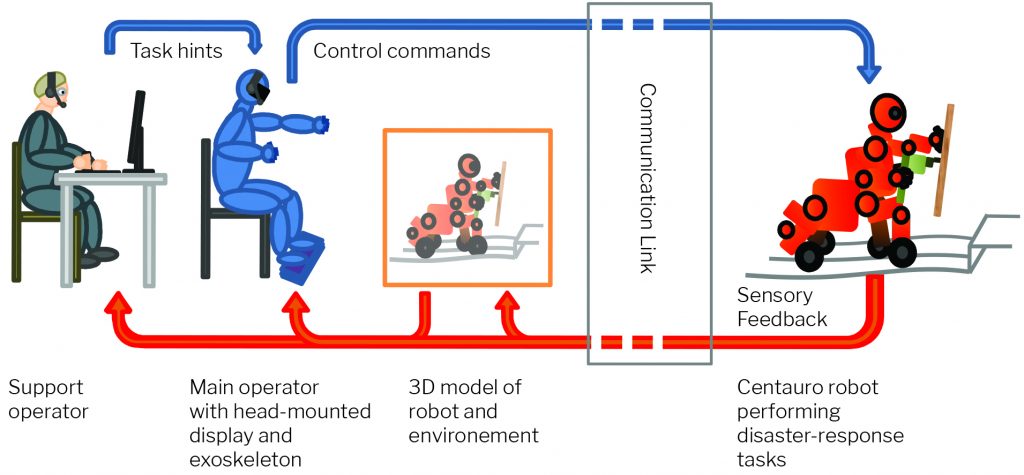The Future of Work: Five Game Changers

DISCLAIMER
Policy Horizons Canada (Policy Horizons) is a strategic foresight organization within the Government of Canada with a mandate to help the Government develop future-oriented policy and programs that are more robust and resilient in the face of disruptive change on the horizon. The content of this document does not necessarily represent the views of the Government of Canada, or participating departments and agencies.
On this page
Foreword

The coming decades will bring significant changes to the nature of work, including what, how, where, and by whom work will be done.
Artificial intelligence, automation, and telepresence can disrupt work as we know it and impact employment levels. Moreover, as more technologies mature and combine, we could see changes to the fundamental organizing principles of the economy, impacting the nature of work. The disruptions to the quantity and quality of work could go beyond any levels we have experienced to date.
This report explores five key game changers for the future of work and their policy implications. The goal of this report is not to predict the future. It is to help decision makers think through plausible futures and anticipate the challenges and opportunities that may arise for economic growth and welfare across society. We encourage readers to examine the insights with an open mind, and consider whether their organizations and policies are prepared for the possible significant disruptions. Guided by our mandate, we hope to provoke thought and dialogue, and contribute to the development of robust policies and programs in the face of changes that lie ahead for Canada.
Our Future of Work analysis builds on our Next Digital Economy foresight report, which we also invite you to read. This in-depth foresight study involved research, interviews, and workshops. It benefitted from collaboration with several departments and agencies across the public service of Canada, as well as non-governmental stakeholders, experts, and academics.
On behalf of Policy Horizons Canada, I would like to thank the numerous people who generously shared their time, knowledge, and thoughts.
Kristel Van der Elst
Director General, Policy Horizons Canada
Introduction
We are living through a transition to the Next Digital Economy, in which much of our economic activity may become digitally intermediated, customized, on demand, and globally distributed. As a result, the models for production and consumption of goods and services are shifting, which could affect both the amount and the nature of work.
As a broad suite of technologies – such as task-based platforms, telepresence, automation, artificial intelligence (AI), and blockchain – mature and combine, they are poised to have a particularly disruptive impact on employment and the experience of work.
This paper explores five key game changers for the future of work. A game changer is a significant shift in the way we think about or do something. Each section describes the basic elements of the game changer and identifies implications for public policy.
- Work moves from being long-term and time-based to temporary and task-based. In a globally competitive labour market where many people are paid by the task, how can governments ensure that minimum wage and employment standards are met and social support systems are effective?
- AI and the automation of tasks could put people out of work long before technologies replace entire jobs. How would people cope with reskilling and job loss when tasks could replace jobs as the basic unit of work and are being automated across all sectors?
- AI decreases the scarcity of knowledge workers, potentially allowing jobless growth in knowledge industries. If knowledge and some forms of intelligence can be replicated as needed, what might happen to cognitive labour and ‘thinking’ professions in the future?
- Combined digital technologies could reduce the need for human intermediaries who provide trust and security. What might happen if technology eliminates human transactional roles from the workforce?
- Where people work and earn may not be where they live and spend. What might happen to taxation, social benefits, and the secondary economy when a person can live anywhere in the world but work in Canada, or vice-versa?
Exploring these changes can help identify potential challenges and opportunities, which provides the foundation for a productive dialogue on future-oriented policy.
Game Changer 1:
Work Moves from Being Long-Term and Time-Based to Temporary and Task-Based
Supported by digital technologies, jobs are broken down into many distinct tasks that can be accomplished separately and recombined to achieve the desired result.
This facilitates payment for tasks rather than for time spent. By unbundling jobs into discrete tasks with a piecework value, new ways of performing, compensating, and evaluating work are being experienced in the gig economy.[1]
As more jobs are unbundled into tasks, more work can be uploaded to task-based labour platforms. Digital labour platforms, on which tasks are bought and sold, facilitate further unbundling and distribution of work,[2] and allow employers to set the price they are willing to pay for certain tasks. These tasks can be farmed out to low-cost gig workers rather than being assigned to permanent employees responsible for an entire project. Workers bid on specific tasks posted by employers, and can also set a flat rate for certain tasks. Moving work onto platforms could impact how a person is compensated for work, changing compensation from salary and hourly rates to piecework.
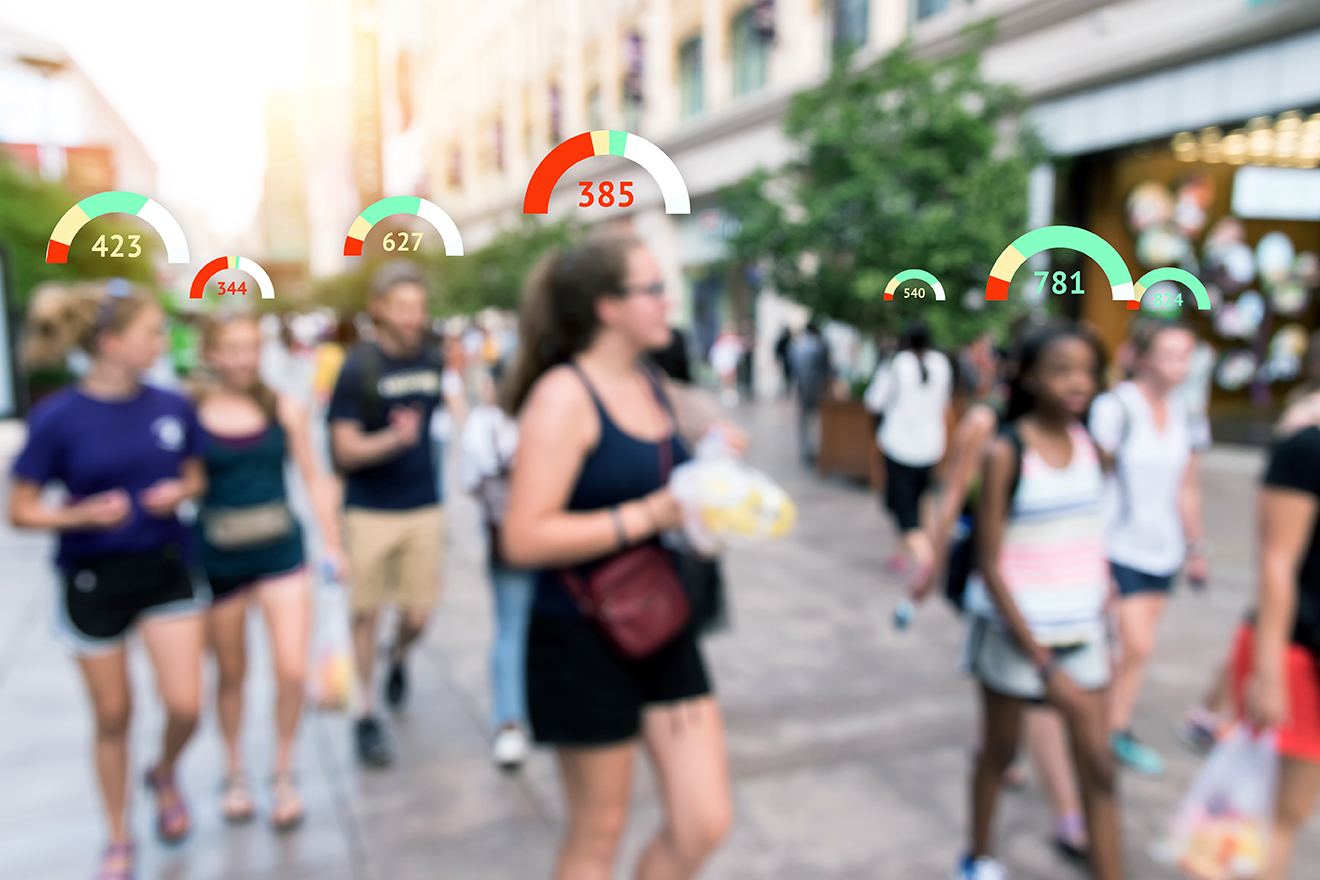
Task-based work and compensation relies heavily on reputation systems. Several gig work platforms use reputation systems to assist workers, customers, and employers to choose a suitable match. These systems measure and provide a score for a worker’s credibility, performance, skills, and potentially personal qualities, such as likability.[3] Some systems quantify reputation intensively, using algorithms to rate people on data coming from many aspects of their lives.
The Sesame Credit system[4] and the experimental credit granting system[5] analyze vast amounts of data, collected through apps and other sources, to rate people based on their behaviour. These increasingly sophisticated and potentially intrusive systems could be implemented on task-based platforms as this rating model becomes more widespread.
Platforms and wages
A 2018 study of 3.8 million tasks conducted on Amazon’s Mechanical Turk platform found a median hourly wage on their platform of around $2 US, with 96% earning less than the US minimum wage, $7.25 per hour.
Implications
The terms and business models of gig work could overflow into all work in an unpredictable way, irrespective of whether the work is online. A World Economic Forum survey found that 50% of major companies surveyed are expected to cut their permanent workforce, while 48% are expected to hire specialist contractors instead of employees. Only 38% are expected to grow their permanent workforce.[6] Essentially, a firm could shift any job susceptible to unbundling from time-based to task-based compensation. Already, “[a]ccording to economists Alan Krueger and Lawrence Katz, the percentage of people engaged in “alternative work arrangements” (freelancers, contractors, on-call workers and temp agency workers) grew from 10.1% in 2005 to 15.8% in 2015. Their report found that almost all — or 94% — of net jobs created from 2005 to 2015 were these sorts of impermanent jobs.”[7] Some sources project that the number of workers in contract jobs could soon equal those in full-time positions.[8]
Traditional employee-employer relationships may become less common. Employers might be wary of taking on the liabilities associated with full-time employees in a fast-changing world if they can instead engage flexible gig workers, or automation technologies that do not require support for upskilling, retirement benefits, or vacation time.
Some firms that offer standardized goods and services could be heavily automated, retaining very few or even no workers. These firms may outsource many of their functions to online gig workers or to other specialized firms using AI intermediaries. If AI and gig workers with no health or unemployment benefits replace traditional employees, corporate contributions to social programs could shrink.
This could strain social supports such as pensions, private health benefits, and training that depend largely on traditional employer-employee relationships in the context of a firm. If the Next Digital Economy reduces or eliminates traditional employment relationships, citizens could look to government to shoulder the burden of such supports.
The overall effect on average wages is unclear, though increased wage polarization seems likely. The real wages of workers with scarce skills that cannot be automated or complement automation would likely increase relative to those whose skills can be substituted.
The uneven distribution of digitally driven employment and wage losses could lead to greater inequality. If the cost of goods and services declines in step with reduced labour costs, some individuals or groups may feel wealthier, even if their incomes stagnate. In sum, those who retain employment could be “better off” even at zero real growth in wages. Conversely, those who lose employment could see minimal benefit from lower costs of goods and services. Career and education choices might shift as a result of how and where wages are distributed. The disparity could grow between gig workers on global digital platforms and those in local economies protected by minimum wage laws or other statutory benefits. A barista job offering a secure $15 per hour in Canada could be a more attractive career than a junior paralegal gig worker performing piecework online at a rate that yields $10 per hour.
Canadian workers may find themselves disadvantaged by reputation systems operated outside of Canadian jurisdiction. Reputation systems developed in other regulatory and governance contexts could introduce forms of discrimination or terms of employment forbidden under Canadian law. Yet Canadians might feel pressured to join them to remain engaged and competitive in a global, task-based market.
Reputation systems: Sesame Credit[9]
- Launched by Alibaba’s Ant Financial
- 520 million users (as of 2017)
- Scores are generated through vast networks of data collection
- Scores are based on credit history, financial status, behaviour, personal characteristics, and interpersonal relationships
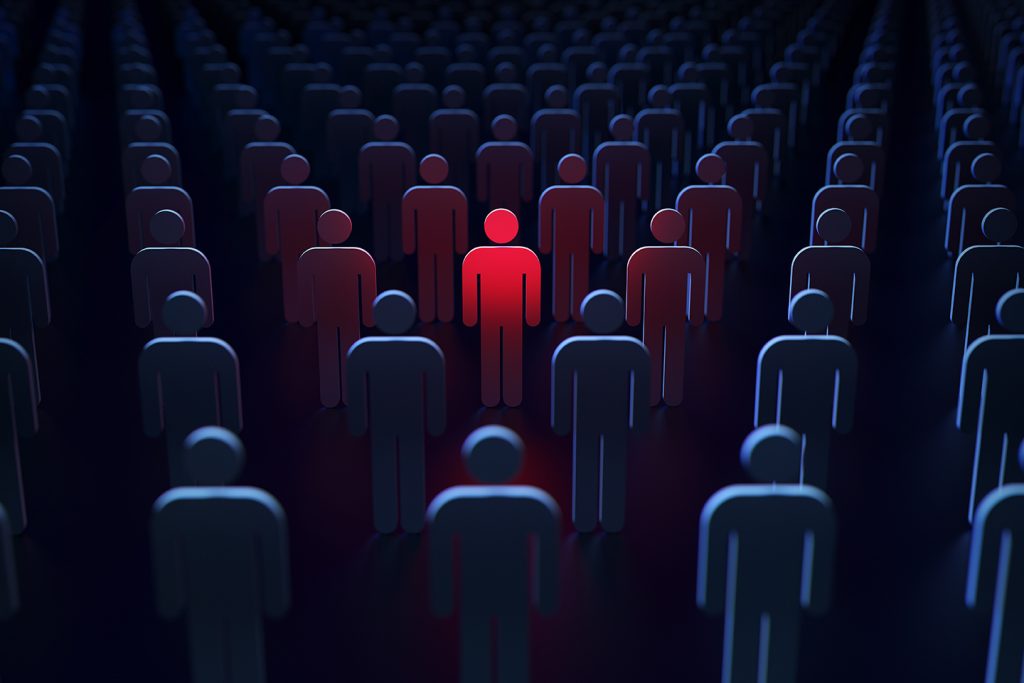
Game Changer 2: AI and Automation Could Erode Employment Long Before These Technologies Replace Entire Jobs
Even jobs that are too complex for complete automation could change dramatically as new technologies enable the automation of particular tasks.
It is dangerous to assume that many jobs will be safe from automation because they are too complex for AI and robotics to handle now or in the foreseeable future. The ability of digital technologies to unbundle jobs into tasks makes that assumption vulnerable. What we consider today as a job may be broken down into many tasks, some of which can be performed by machines either now or in the near future.
Many jobs fall into the ‘could be partially automated’ category. For example, one AI company[10] offers AI assistants that can plan, prepare briefings, and schedule meetings. It also accelerates corporate research by automating access to organizations’ data. While it does not replace an entire job, this AI application replaces several discrete tasks housed within traditional administrative positions.
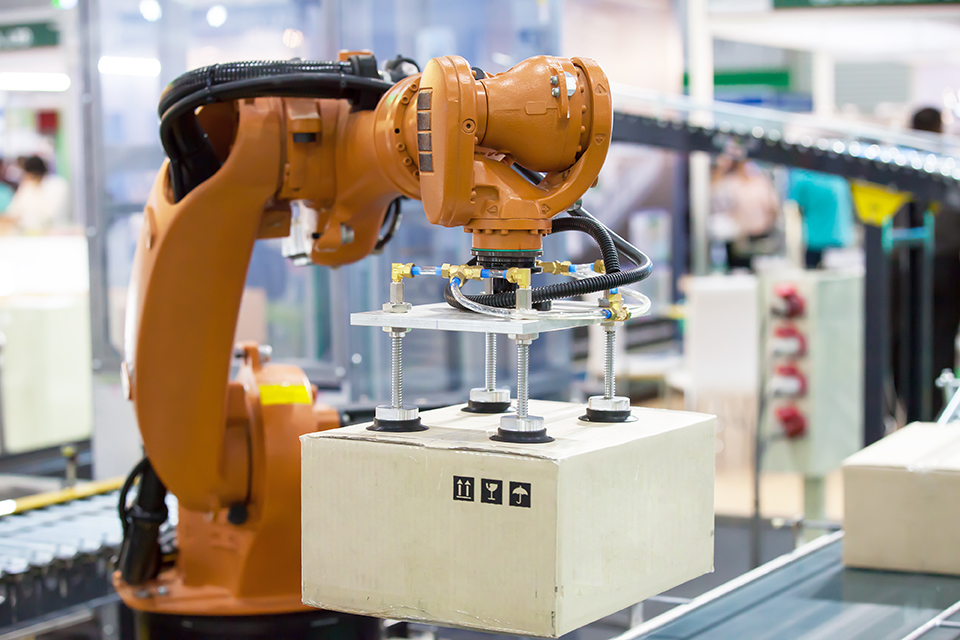
AI and automation could transform work and affect employment levels long before they replace entire jobs. Human effort could be refocused on the remaining tasks that cannot be automated. This could reduce the amount of human labour required to meet demand, and provide significant advantages over humans and advanced technologies acting in isolation. In long-haul trucking, for example, we could see highway driving – the longest and easiest part of the route – assigned to an autonomous truck, with human intervention during the shorter, more complex trips from port to highway and from highway to final destination. Entire convoys of trucks can already be driven by a single lead driver,[11] eliminating the need for several drivers.
AI in Human Resources[12]
- Analyzes behaviours and traits to identify core job competencies
- Screens candidates on how much they match the identified competencies
- Uses predictive analytics to project how well suited a candidate is for a job
- Identify employees at risk of leaving or violating terms of employment

Robot-centric workplace design could reduce barriers to automation. Human-oriented workplace design limits automation in some sectors. However, as firms augment their workspaces to accommodate machines, the need for human workers could decrease quicker than expected. For example, some newly designed grocery warehouses have no traditional shelves. As a result, machines can move easily along a grid of tracks and reach down into storage bins.[13] Just as robots struggle with human-oriented shelving, humans would have difficulty navigating much of this robot-centric workplace. Workplace design for automation could reduce the need for human workers in complex environments.
Implications
In some scenarios, employment opportunities could shrink as the cumulative effects of task automation reduce demand for human labour across many sectors.
The unbundling of jobs into tasks could cascade through the entire economy simultaneously. In the past, workers who lost jobs in a declining sector may have found similar work in another. In the Next Digital Economy, tasks automated in one sector will likely be automated in all sectors, making entire lines of work rare or obsolete across the economy.
We could see structural unemployment over the long term. Traditional cyclical models that assume a return to equilibrium after a period of job losses might not hold. Increased unemployment could result over the short and medium terms, as some jobs disappear. In the standard model, employment would return to equilibrium in the long run as real wages adjust, workers acquire new skills, and higher total incomes create demand for goods and services. However, the radical changes caused by the combination of gig work and automation could also create a new structural reality and invalidate standard assumptions.
There is much to learn about whether and how workers who lose jobs due to task automation can be retrained or reskilled. Opportunities will likely remain in existing jobs that are not automated, existing jobs that are transformed, and entirely new jobs in the Next Digital Economy. However, the future skills and mindsets needed for these jobs remain unclear. Even if these become clear, developing them among unemployed workers may require substantial time and money. It may even prove impossible for some.
Close cooperation between humans and machines could increase, leading to higher efficiency and outcomes, and eliminating automatable tasks. This type of work – sometimes called centaur work – lets humans and machines team up, each working to its strengths.[14] Centaur work could change many workers’ experience, and even make work better and more meaningful. Robots may take on routine, repetitive, and dangerous tasks, allowing human teammates to focus on higher-value, creative activities. This could result in higher productivity for firms, and better outcomes in terms of safety and happiness of workers. On the other hand, if human team members spend more time on complex tasks without respite, they could experience additional stress and burnout.
- Human-robot integrated system for disaster relief
- Human operation of a robot through a full-body telepresence suit with haptic feedback
- Allows the robot to enter disaster areas unsuitable for humans and aid in relief efforts and cleanup
- Shared situational feedback between human and robot through augmented reality (AR) for decision making
Game Changer 3:
AI Ends the Scarcity of Knowledge Workers, Potentially Allowing Jobless Growth in Knowledge Industries
AI has the potential to reduce the scarcity of knowledge workers and enhance expertise across sectors.
AI could reduce the scarcity of knowledge workers. Adding knowledge-based work capacity currently requires resources to recruit, train, compensate, and manage additional humans.But firms may be able to duplicate AI designed to collect and apply task-specific knowledge at near-zero marginal cost. This offers firms a low-cost alternative to hiring additional humans, with all their traditional financial and human resources costs. This is already occurring in several knowledge-based sectors:
- In accounting and finance, there are apps that use AI to help freelancers and SMEs automate their accounting and financial reporting systems.[16] AI solutions are also helping banks and credit lenders make smarter underwriting decisions.[17]
- In data science, there is a high demand[18] for existingAI that automates data scientists’ work. One such AI uses big data to help businesses make decisions on topics such as wealth management, direct marketing, and lending.[19]
- In human resources, there are several AI- based apps that assist in areas such as recruitment, evaluation, and retention. One app analyzes information about employees to detect if anyone is at risk of leaving or causing security breaches.[20]
Centaur work could also impact knowledge industries. While AI might completely replace knowledge workers in some areas, the combination of AI and humans could be the key to augmenting knowledge-work capacity. AI is capable of learning from several human experts, and gaining knowledge based on their collective experience and expertise. This makes AI a valuable resource for humans to supplement their existing expertise in knowledge industries. In the health industry, AI assists doctors in diagnostics. For example, Watson Health[21] works with physicians to enhance their ability to diagnose illnesses with precision and speed. It was able to diagnose lung cancer with 90% accuracy compared to 50% for human doctors.[22] Although AI has proven effective in certain areas to date, its potential depends on context. For instance, certain AIs excel in radiology[23] and data analytics.[24] However, AI still struggles with more general tasks, and can get confused when trying to differentiate a Chihuahua puppy from a blueberry muffin, for example.[25] Humans working with AIs could process more volume while avoiding AI-specific errors.
Several prominent mergers and acquisitions between health and technology companies in recent years highlight the impact AI, Big Data, and the Internet of Things are already having in one knowledge industry. These mergers bring new services online but also disrupt traditional patterns of knowledge work and employment.
Examples of the 2018 mergers and acquisitions in health and technology include:[26]
Roche & Flatiron Health
Multinational personalized healthcare company, Roche, which aims to be a global leader in personalized health (connecting human biology with data analysis), purchased Flatiron Health. Flatiron is a data platform dedicated to oncology, with a mission is to fight cancer by connecting medical researchers, practitioners, and regulators.
Headspace & Alpine.AI
Headspace is a meditation and mindfulness application which was co-created by a Buddhist monk. This merger may suggest a trend toward AI integration in the mental health space. It aims to give users access to virtual mindfulness gurus.
Medtronic & Nutrino
Diabetes management giant Medtronic purchased Nutrino, an AI platform designed to improve health outcomes by collecting and analyzing personal food consumption data and linking it to physiological changes. The accumulation of such data for diabetics and the population in general could have profound effects on future health treatments.
Withings co-founder re-acquires firm from Nokia
Withings is a health-monitoring company, which manufactures smart devices designed to track health and lifestyle data and provide personalized advice. Examples include smart scales tracking BMI to sleep monitors to blood pressure devices with built-in ECG’s.
Muse & Meditation Studio
Muse is the company behind a brain sensing headband (combining neuroscience, fashion design, and psychotherapy) which tracks and reports on brain activity linked to stress and anxiety. Seeing an opportunity to provide users more than measurement and tracking, Muse purchased Meditation Studio, whose mindfulness experts provide Muse users with data-based guidance on how to lower stress, reduce anxiety, boost confidence, and improve sleep.
Other examples of large health mergers and acquisitions:
- Logisticare & Circulation (partnered with Uber and Lyft)
- Dexcom & TypeZero
- Fitbit & Twine Health
- Amazon & PillPack
- Best Buy & GreatCall
Implications
The transformative power of the Next Digital Economy will not be limited to low-skilled knowledge work. As AI reduces knowledge scarcity, it can have sweeping impacts in high-skilled knowledge jobs such as medical professions as well as low-skilled knowledge jobssuch as data entry. Automation does not have regard for professional status, although rules and standards may slow automation in some regulated professions.
There is potential for jobless growth in knowledge industries if adding knowledge-work capacity becomes a “cut and paste” effort rather than a “hire and train” effort. Firms could decide to expand their capacity by acquiring replicable and updateable AI instead of hiring new knowledge workers. Firms could see economic growth without adding jobs. At the same time, jobs for certain classes of knowledge work could disappear, creating a skills glut and increasing demand for social supports.
The gains from jobless growth in knowledge industries could be mainly captured by megafirms. Great reservoirs of data are the foundation for developing successful AI. In what is essentially a network effect economy, few firms may have access to such reservoirs. This could make market concentration a major concern, and lead to calls for regulation on data collection and use that to pit megafirms against consumers, small competitors, and governments. Competition law and data protection regimes could be major factors in the overall shape of the emerging economy.
Continued digitization of the economy may create a turbulent period of‘creative destruction’ and fierce competition. Firms based on traditional models may struggle to survive as new entrants arise or move in from other sectors. In such a world, firms may avoid taking on future liabilities, such as human employees, in order to stay nimble, which could drive down employment in some sectors. However, hyper-competition could also make certain human skills even more valuable.
LawGeex[27]
- AI to perform contract reviews to assist lawyers on the job
- Designed to detect flaws or errors in contracts
- Contracts are compared against companies’ legal policies to ensure compatibility[28]
- It outperformed 20 top US corporate lawyers[29] in a contest to spot issues in non-disclosure agreements
Game Changer 4:
Combined Digital Technologies Could Reduce the Role of and Need for Human Intermediaries
In the Next Digital Economy, any job that primarily involves facilitating agreements or transactions between other humans could be at risk.
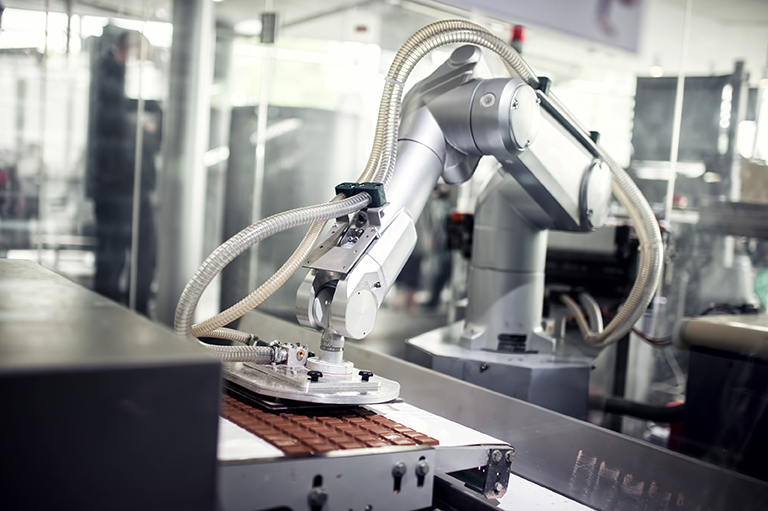
Blockchain technologies can provide the assurance that fosters trust in many transactions, removing the need for human guarantors such as bank workers and lawyers. Further, blockchain-based smart contracts allow for automated payment on delivery. A recent startup university proposes using smart contracts and blockchain to administer and track its students’ tuition, credits, and degrees.[30] Similarly, one major tech company is turning to blockchain smart contracts for royalty payments.[31]
Sensors built into the Internet of Things can determine when a product or service is required. For example, one major appliance company has a refrigerator that uses a camera-enabled AI assistant to detect, label, and list foods, reminding consumers when certain items need replenishing.[32] Sensor technology is particularly useful for planning machine maintenance. Predictive maintenance[33] programs administered by AI that draw data from embedded sensors eliminate guesswork and improve scheduling, minimizing machine downtime.
AIs can negotiate optimal terms and place orders. For example, popular online shopping and streaming services already curate options based on past consumption.[34] Automated factories using advanced manufacturing technologies such as 3D printing could autonomously produce customized products on demand, while automated logistics could deliver products to end users. Recently, a major shipping company and a major tech company launched a cross-border supply chain solution[35] using blockchain to manage transactions among shippers, freight forwarders, ocean carriers, ports, and customs authorities. Other companies are testing fully automated[36] e-commerce drone delivery systems.[37]
Smart Contracts[38]
- AI-assisted, legally binding contracts
- AI agents for personalized assistance to guide you through legal agreements and notify you of your legal duties and rights
- Contracts are put into coded language on the blockchain while giving the owner a naturally written, binding document to be digitally signed by all parties
Implications
Across the value chain, many of the tasks performed by human intermediaries could be replaced by technology. By replacing human workers with technology that can work faster, cheaper, and with near-zero friction, firms can reduce costs while improving efficiency. These efficiencies could enable short or even custom production runs that make value chains transitory. As the cost of customization decreases, locally produced, bespoke objects could compete on price with batch-produced objects, bringing “pop-up value chains” into existence. The resulting products could use less material, perform to the user’s specifications, and decrease warehousing and long-distance transportation needs.
The loss of white-collar jobs could be extensive across sectors. Many white-collar jobs that serve as intermediaries could be greatly reduced. Finance, law, and brokering could see major employment contractions in the face of these new technologies. Traditional professions may need to redefine themselves during the transition to the Next Digital Economy.
Contractions in the professions could disrupt a number of support structures with significant employment consequences. Professional associations could wither as professions shrink and some of their accrediting functions shift to intermediary technologies.
e-Estonia: healthcare[39]
- Online e-health record for each citizen
- Blockchain-based electronic ID card to keep secure health information accesible to authorized parties
- Single space for patients’ entire medical file
- e-ambulance and e-prescriptions to optimize emergency response and medical treatments
Game Changer 5:
Where People Work and Earn May Not Be Where They Live and Spend
In the future, online gig work platforms and advances in telepresence and automation mean that people may not work and earn where they live and spend.
Knowledge-based tasks can already be assigned to workers anywhere. Some knowledge jobs, such as writing and graphic design, are being broken down into discrete tasks and distributed via online platforms. Workers anywhere can perform these tasks. Canada is already one of the largest suppliers and demanders of online labour on task platforms.[40]
Advanced telepresence allows workers to perform physical tasks from a remote location. Telepresence technologies are evolving to enable people to interact seamlessly with other people and machinery from a distance. Advances in virtual reality (VR), augmented reality (AR), mixed reality (MR), and robotics reduce the need for people to share a physical space or be present at a job site. For example, new mining techniques involve a high level of automation in drilling and transporting materials. These automated operations can be controlled from an office far away from the extraction site.[41] Similarly, forestry firms are testing self-driving logging trucks, tree-planting drones, and automated forest management systems.[42] In the oil and gas sector, automation, and robotics are being used to inspect infrastructure and perform diagnostics on areas in need of repair.[43]There is also increased use of telemedicine services (consultations, monitoring, and interventions) to improve access to health care services in remote areas.[44]
Telework allows people to choose where to live, now some places are offering incentives to live (and spend) there.
- At least 10 jurisdictions have announced incentive programs to attract workers[45]
- Vermont is offering up to $10,000 to teleworkers who relocate there[46]
- Tofino is looking to be an innovation hub and build coworking infrastructure to attract workers[47]
AR, VR, and MR offer different ways for users to experience simulations and remote collaboration. In VR, users experience an entirely digital environment, cutting out the physical world around them. AR overlays interactive digital objects and information onto the real world. This can be experienced on a smart phone or through smart glasses. One online shopping company[48] offers AR in its shopping app, allowing users to virtually place products into their home to ‘try-out’ the product. MR combines the physical and virtual world more closely, allowing users to manipulate both virtual and physical objects that interact with each other.
In Europe, these technologies are being used to train counterterrorism operatives and first responders. Through Automated Serious Game Scenario Generator for Mixed Reality Training, trainees from agencies across Europe can interact in a single online virtual security scenario. Alternatively, MR allows teams to practice in real-world locations enhanced with interactive digital constructs.
Implications
If work is no longer tied to where people live, jurisdictions could compete to attract people to live and spend there. Some jurisdictions already offer[49] economic incentives for remote workers to relocate and spend their money in the jurisdiction. This could lead to new types of winners and losers: areas that can offer attractive amenities and lifestyle, such as safe walking communities, green space, and good public schools could draw remote worker populations (and consumer-driven revenues) away from less attractive locales.
If major economic activities such as resource extraction can be accomplished from a distance, the secondary economies that have depended on wages from local primary economy jobs could be hit hard. With fewer jobs and smaller economic knock-on effects to offer, firms may need to find new ways of winning support from the communities, including Indigenous rights-holders, where they hope to establish operations.
If geographic restrictions on employment break down through a combination of unbundling and digital technologies, a highly competitive global labour market could emerge, eliminating local scarcities for many kinds of cognitive and physical expertise. This could impact both white- and blue-collar workers. Wages for similar tasks could converge across all participating jurisdictions. While this could benefit people with exceedingly rare skills, it could disadvantage the remainder, particularly those who live in areas with a high cost of living. Such workers could struggle to compete with those whose lower cost of living allows them to underbid, effectively reducing piecework rates for all.
Telepresence could change the definition and allotment of skills across the economy. Advanced telepresence frees experts from being on site to carry out tasks. This could lead to “tele-grunt” services, where offsite experts use telepresence to direct low-skilled workers carrying out complex tasks onsite. The new types of telepresence work that emerge, as well as the use of this technology for training, could require new skill sets. For example, remote operation of machinery using a controller could require different aptitudes than physical operation on site. This could drive the replacement of ‘work experience’ with ‘skills experience’ in the employment market.
Rio Tinto’s Mine of the Future programme[50]
- All mines are operated from one central remote location
- Autonomous haulage systems, including trucks and trains, transport materials
- Automated drilling systems aimed to allow one operator to operate multiple rigs from one location
Administering taxation could be more difficult. It will be increasingly difficult to identify where transactions take place and value is created. States might struggle to collect income taxes from citizens who work in other jurisdictions via gig-work platforms, especially if these platforms are reluctant to collect taxes or share data. Consumption taxes could also be more difficult to collect, as the economy shifts from material goods to digital goods and services that are harder to monitor. Difficulties securing revenue streams could encourage international cooperation on tax treaties, but it could also provoke states into hard-nosed competition for shrinking revenues.
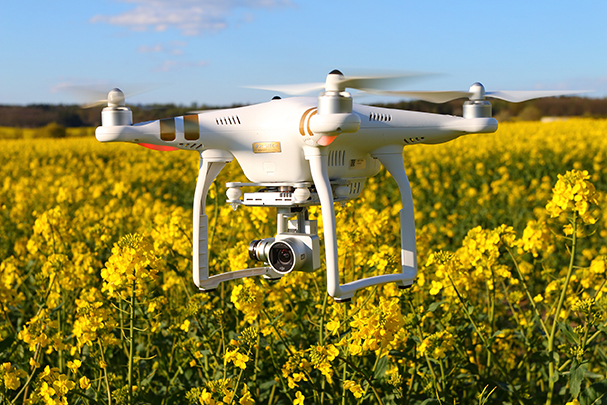
Acknowledgements
This report is the result of extensive economic foresight by Policy Horizons Canada to explore five game changers for the future of work and their policy implications. The work involved research, interviews, and workshops with several departments and agencies across the federal public service, as well as external stakeholders and experts.
Future of Work Project Team Members
Marcus Ballinger, Manager
Martin Berry, Foresight Analyst
Steffen Christensen, Senior Foresight Analyst
Pierre-Olivier DesMarchais, Foresight Analyst
Avalyne Diotte, Foresight Analyst
Jennifer O’Rourke, Foresight Analyst
Peter Padbury, Chief Futurist
Rhiannen Putt, Senior Foresight Analyst
Many Horizons staff contributed to this report by providing leadership, facilitation, research, drafting, and design, namely: Maryam Alam, Kristel Van der Elst, Emma Garand, Ian Lambert, Nelly Leonidis, Chris Hagerman, Alain Piquette, Sven Schirmer, Eric Ward, and Nadia Zwierzchowska.
We would like to thank the numerous departments, agencies, stakeholders, and experts who contributed to our work on this report. We would particularly like to thank Ryan Boyd (Policy Innovation Hub, Ontario Cabinet Office), Chrysandre Courchêne (HR Business Innovation Team, Human Resources Services Branch, Employment and Social Development Canada), and Adon Moss (Policy Innovation Hub, Ontario Cabinet Office).
The ideas presented in this report do not necessarily reflect the views expressed by everyone interviewed.
Endnotes
[1] L. Vitaud, “The Unbundling of Jobs and What it Means for the Future of Work,” Medium, last modified May 15, 2018, https://medium.com/blockchain-and-the-distributed-workforce/the-unbundling-of-jobs-and-what-it-means-for-the-future-of-work-9d04a50767bc.
[2] European Commission, “Digital employment platforms gaining a foothold in Europe’s labour markets,” EU Science Hub, last modified Jun. 27, 2018, https://ec.europa.eu/jrc/en/news/digital-employment-platforms-in-europe.
[3] E.g. Uber, Yelp, and LinkedIn employ such systems. A. Griswold, “Good luck leaving your Uber driver less than five stars,” Quartz, last modified Apr. 5, 2018, https://qz.com/1244155/good-luck-leaving-your-uber-driver-less-than-five-stars/. J. Hawkins, “Yelp vs Google: How they deal with fake reviews,” Search Engine Land, last modified Nov. 1, 2018, https://searchengineland.com/yelp-vs-google-how-do-they-deal-with-fake-reviews-307332. D. Ramachandran, “Reputation Score is the Ultimate Measure of Brand Trust,” Linkedin, last modified Oct. 31, 2016, https://www.linkedin.com/pulse/reputation-score-ultimate-measure-brand-trust-dilip-ramachandran.
[4] N. Kobie, “The complicated truth about China’s social credit system,” Wired, last modified Jan. 21, 2019, https://www.wired.co.uk/article/china-social-credit-system-explained.
[5] E. Xiao, “Tencent’s new credit system to use payments, social data,” Techinasia, last modified Jan. 31, 2018, https://www.techinasia.com/tencent-credit-launch.
[6] “The Future of Jobs Report 2018,” World Economic Forum, last modified Sept. 17, 2018, http://www3.weforum.org/docs/WEF_Future_of_Jobs_2018.pdf.
[7] L. F. Katz and A. B. Krueger, “The Rise and Nature of Alternative Work Arrangements in the United States, 1995-2015,” ILR Review, 72.2 (2019) 382-416, https://krueger.princeton.edu/sites/default/files/akrueger/files/katz_krueger_cws_-_march_29_20165.pdf.
[8] Y. Noguchi, “Freelanced: the Rise of The Contract Workforce,” NPR, last modified Jan. 22, 2018, https://www.npr.org/2018/01/22/578825135/rise-of-the-contract-workers-work-is-different-now.
[9] M. Koetse, “Insights into Sesame Credit & Top 5 Ways to Use a High Sesame Score,” Whats On Weibo, last modified Nov. 7, 2018, https://www.whatsonweibo.com/insights-into-sesame-credit-top-5-ways-to-use-a-high-sesame-score/.
[10] “A.I. Automated Assistant,” Zoom.ai, https://zoom.ai/.
[11] “Semi-autonomous truck platooning – how does it work?” Scania Group, YouTube, published Jan. 29, 2018, https://www.youtube.com/watch?v=lpuwG4A56r0.
[12] E.g. HiredScore and Pymetrics. On the latter, J. Constine, “Pymeterics attacks discrimination in hiring with AI and recruiting games,” Techcrunch, last modified Sept. 20, 2017, https://techcrunch.com/2017/09/20/unbiased-hiring/.
[13] J. Vincent, “Welcome to the Automated Warehouse of the Future,” The Verge, last modified May 8, 2018, https://www.theverge.com/2018/5/8/17331250/automated-warehouses-jobs-ocado-andover-amazon.
[14] N. Case, “How to Become a Centaur”, JDS, last modified Feb. 6, 2018, https://jods.mitpress.mit.edu/pub/issue3-case.
[15] “About Centauro,” European Union Centauro Project, http://www.centauro-project.eu/about-centauro.
[16] E.g. see SMACC, https://www.smacc.io/en/.
[17] E.g. see Zest Finance, https://www.zestfinance.com/.
[18] P. Petrone, “Why It’s Really Good to Be a Data Scientist Right Now,” Linkedin, last modified Aug. 20, 2018, https://learning.linkedin.com/blog/tech-tips/why-it-s-really-good-to-be-a-data-scientist-right-now.
[19] E.g. see DataRobot, https://www.datarobot.com/about-us/.
[20] E.g. see Veriato, https://www.veriato.com/.
[21] “Artificial Intelligence Solutions: Expanding the physician’s view,” Merge, http://www.merge.com/Solutions/Artificial-Intelligence.aspx.
[22] I. Steadman, “IBM’s Watson is better at diagnosing cancer than human doctors,” Wired, last modified Feb. 11, 2013, https://www.wired.co.uk/article/ibm-watson-medical-doctor.
[23] J. Kent, “How Artificial Intelligence is Changing Radiology, Pathology,” HealthAnalytics, last modified Aug. 3, 2018, https://healthitanalytics.com/news/how-artificial-intelligence-is-changing-radiology-pathology.
[24] “The role of AI in big data analytics,” Information Age, last modified Feb. 26, 2018, https://www.information-age.com/role-ai-big-data-analytics-123470981/.
[25] M. Yao, “Chihuahua or muffin? My search for the best computer vision API,” FreeCodeCamp, last modified Oct. 12, 2017, https://medium.freecodecamp.org/chihuahua-or-muffin-my-search-for-the-best-computer-vision-api-cbda4d6b425d?gi=6f7f691e5d1d.
[26] “Top 10 Digital Health Mergers And Acquisitions Show Trends For 2019,” The Medical Futurist, last modified Jan. 8, 2019, https://medicalfuturist.com/digital-health-mergers-and-acquisitions-2018.
[27] E.g. see LawGeex, https://www.lawgeex.com/aboutus/.
[28] S. O’Hear, “LawGeex raises $12M for its AI-powered contract review technology,” Techcrunch, last modified Apr. 17, 2018, https://techcrunch.com/2018/04/17/lawgeex-raises-12m-for-its-ai-powered-contract-review-technology/.
[29] J. Wood, “This AI outperformed 20 corporate lawyers at legal work,” World Economic Forum, last modified Nov. 15, 2018, https://www.weforum.org/agenda/2018/11/this-ai-outperformed-20-corporate-lawyers-at-legal-work/.
[30] M. Roller, “Oxford academics launch ‘blockchain university’,” Cherwell, last modified Mar. 22, 2018, https://cherwell.org/2018/03/22/oxford-academics-launch-blockchain-university/.
[31] A. Munro, “Microsoft turns to blockchain smart contracts for royalty payments,” Finder, last modified Jun. 25, 2018, https://www.finder.com.au/microsoft-turns-to-blockchain-smart-contracts-for-royalty-payments.
[32] Samsung’s Family Hub refrigerator, which employs their Bixby Vision AI, https://www.samsung.com/global/galaxy/apps/bixby/vision/.
[33] C. Murray, “Predictive Maintenance can Benefit All Manufacturers,” Design News, last modified Jan. 2019, https://www.designnews.com/industrial-machinery/predictive-maintenance-can-benefit-all-manufacturers/64099930860063.
[34] E.g. Amazon and Netflix.
[35] “Maersk and IBM Unveil First Industry-Wide Cross-Border Supply Chain Solution on Blockchain,” IBM, last modified Mar. 5, 2017, https://www-03.ibm.com/press/us/en/pressrelease/51712.wss.
[36] T.C. Rosenthal, “Vans & Drones in Zurich: Mercedes-Benz Vans, Matternet and siroop start pilot project for on-demand delivery of e-commerce goods,” Daimler, last modified Sept. 28, 2017, https://media.daimler.com/marsMediaSite/en/instance/ko/Vans–Drones-in-Zurich-Mercedes-Benz-Vans-Matternet-and-siroop-start-pilot-project-for-on-demand-delivery-of-e-commerce-goods.xhtml?oid=29659139.
[37] M. Burgess, “Mercedes vans filled with swarming delivery bots could be heading to your hometown,” Wired, last modified Sept. 16, 2016, https://www.wired.co.uk/article/mercedes-starship-drones-delivery-van.
[38] “Smart Contracts: The Best Way to Make a Deal,” Newsbtc, last modified May 13, 2018, https://www.newsbtc.com/2018/05/13/agrello-smart-contracts-best-deal-making-way/. E.g. see Agrello, https://www.agrello.io/.
[39] “Healthcare,” E-Estonia, https://e-estonia.com/solutions/healthcare/e-health-record/.
[40] “The iLabour Project: Investigating the Construction of Labour Markets, Institutions and Movements on the Internet,” Oxford Internet Institute, University of Oxford, last modified Apr. 1, 2019, http://ilabour.oii.ox.ac.uk/online-labour-index/.
[41] E.g. see “Mine of the Future,” Rio Tinto, accessed Apr. 1, 2019, http://www.riotinto.com/australia/pilbara/mine-of-the-future-9603.aspx.
[42] J. Stewart, “Sweden’s Electric Robot-Truck is made for life in the forest,” Wired, last modified Jul. 12, 2018, https://www.wired.com/story/einride-t-log-electric-autonomous-self-driving-truck/.
[43] J. Shaw, “applying AI to UAV Data for Oil & Gas Pipeline Inspections,” ELE.ai, last modified Jan. 10, 2019, https://ele.ai/2019/01/10/applying-ai-to-uav-data-for-oil-gas-pipeline-inspections/.
[44] E.g. see “Remote Medical Care: Modern diagnostics without leaving home,” Comarch, accessed Apr. 1, 2019, https://www.comarch.com/healthcare/products/remote-medical-care/. For interventions see, R. Eveleth, “The surgeon who operates from 400km away,” BBC Future, last modified May 16, 2014, http://www.bbc.com/future/story/20140516-i-operate-on-people-400km-away.
[45] N.L. Pesce, “These 10 cities, states and countries will pay you to move there,” MarketWatch, last modified Jan. 3, 2019, https://www.marketwatch.com/story/these-9-cities-states-and-countries-will-pay-you-to-move-there-2018-10-26.
[46] L. Begley Bloom, “Vermont Wants To Pay You $10, 000 To Move There And Work,” Forbes, last modified Jun. 3, 2018, https://www.forbes.com/sites/laurabegleybloom/2018/06/03/vermont-wants-to-pay-you-10000-to-move-there-and-work/#1d44ecf311c9.
[47] “World Renowned Tofino Innovating to Become a Workplace Destination for Global Nomads,” Cision, last modified May 25, 2018, https://www.newswire.ca/news-releases/world-renowned-tofino-innovating-to-become-a-workplace-destination-for-global-nomads-683692841.html.
[48] S. Perez, “Wayfair’s Android app now lets you shop for furniture using augmented reality,” Techcrunch, last modified Mar. 20, 2018, https://techcrunch.com/2018/03/20/wayfairs-android-app-now-lets-you-shop-for-furniture-using-augmented-reality/.
[49] Begley Bloom, “Vermont Wants To Pay You.” [1] E.g. see “Mine of the Future,” Rio Tinto, accessed Apr. 1, 2019, http://www.riotinto.com/australia/pilbara/mine-of-the-future-9603.aspx.

